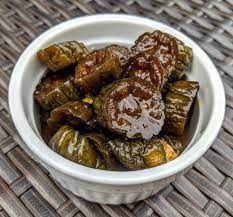Helping the Rice Go Down: Tsukemono - Japanese Pickles
If you’re going to have a full Japanese style breakfast, pickles are non-negotiable. We’ve really only just begin exploring the expansive world of Tsukemono, which ranges from lengthy multi-step projects to simple quick pickles you can do with ingredients you probably already have.
Like a lot of more niche subjects, tracking down extensive information about Tsukemono can be a little difficult to find in English. We’ve found a great and quite large recipe collection in Japan by Nancy Hachisu, which along with bits from The Art of Fermentation by Sandor Katz has been a great place to start.
It’s a shame making them at home isn’t more common when you consider that most store bought japanese pickles are a shadow of their true selves. The neon, preservative packed, and artificially sweetened pickles we get in Australian stores and restaurants are as akin to the real deal as a McDonald’s cheeseburger pickle is to a 2 month old Full Sour Dill Pickle. Different stratospheres.
I grew up loving those commercial pickles, even though I never knew which vegetables they were made of…or even really that they were vegetables. Those neo yellow guys in sushi? That’s Takuan and it’s made of Daikon Radish. In Kyoto I saw masses of them, still with their tops, plunged into barrels fermenting with rice bran, kombu and flowers staining them lovely bright natural yellow.
There are so many different styles, some that resemble western pickling and some that diverge drastically.
Shiozuke
Shiozuke pickling is simply pickling with salt. Some Asazuke (quick pickled) style Shiozuke preparations are so simple you probably have all the ingredients even if you don’t make Japanese food at home.
They range from around 2-10% salt to weight of vegetables, depending on how salty you want it and how long you want to keep it. As with most pickling, the longer you want to keep something, the sweeter, saltier and more acidic it should be.
It can be as easy as slicing some cucumbers, carrots, radishes (anything crunchy is great) up, putting a tablespoon (25g) of Salt into 1l of water, pouring over and putting in the fridge overnight. Take out of the brine and eat within the week. You could also add in a little kombu or shitake to the brine. Very easy, tasty and cool.
Misozuke
Everyone knows about miso now right? But how many have buried a garlic clove in it until the garlic goes rich and opalescent and the garlic flavours the miso? Not enough.
Misozuke is just pickling by burying under miso. It can get pretty adventurous an intense, i.e. burying whole fish, eggs, or it can be quite simple, effective and tasty. Burying cloves of garlic is an excellent way to preserve them, meanwhile making your miso tastier.
If you’re in Adelaide you can pickup some really nice miso at Little Tokyo near the Central Markets, or even at Kim Wang. Look for stuff in the fridge not on the shelf.
Shoyuzuke
Some of you may have tried our Shoyuzuke Cucumbers! These ones are really fun and they keep their crunch and cuke flavour in the soy sauce.
The method here is a little more similar to Western pickling, in that you are making a sweet brine, just instead of just vinegar and water, you add soy sauce!
Some vegetables to look at: cucumber, eggplant, choy sum, radish .



